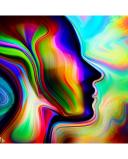Psychedelics
The Power of the Group in Psychedelic-Assisted Therapy
In psychedelic group therapy, human connection can help with individual healing.
Posted October 2, 2024 Reviewed by Gary Drevitch
Key points
- Most patients treated with psychedelic-assisted therapies feel an increased sense of connectivity.
- Group therapy can be transformative but is underutilized in psychedelic-assisted therapy practice.
By Betsy Jenkins, LCPC
In recent years, there has been much debate about the role of traditional therapy in psychedelic-assisted therapy. Some argue that the medicines are the primary agents of change, needing only minimal support from a therapist or facilitator. Others argue that the therapist plays a pivotal role in treatment efficacy and safety. As therapists, we are with patients throughout their entire journey—from preparing them before they take the drug, to being there during their dosing session, and then helping them integrate their experience afterwards. By creating a safe and comfortable environment, and providing a supportive and engaged presence, the therapist can and does have a significant impact on the outcome.
I believe the therapy element of this treatment is as important as the psychedelic compound.
The supportive presence, so necessary in psychedelic-assisted therapy, can be enhanced in a group setting. As humans, we are often driven by a quest for meaning and a need to bond with others. Psychedelics bring out a strong sense of love and connectivity and feelings of unity and peace—so being together with others having similar experiences should be helpful. However, most existing protocols for psychedelic-assisted therapies call for one-on-one patient-therapist sessions. Throughout my career, I have seen the power of group therapy and believe it can be useful in psychedelic-assisted therapy.
Group therapy in cancer care
Prior to becoming a psychedelic therapist, I provided therapy and counseling to a wide range of patients, including those with cancer, and saw firsthand the transformative impact group therapy can have.
I have helped to establish a number of groups for cancer patients to support each other and share experiences. There is always some initial skepticism, and individuals naturally may have reservations about being in group situations. But these are usually overcome, and what blooms is love and support.
People with similar experiences bond deeply and quickly. Cancer can be isolating, particularly for older people, and a group brings people together. When a patient in one of my groups expressed anxiety about going to a scan by herself, another offered to accompany her. Strangers become family. In fact, many group members will say that it’s only in the group that people really understand what they’re going through, and such understanding can have a transformative impact on their well-being.
Group therapy in psychedelic-assisted therapy (PAT)
Should the group model be used more often in PAT? The increased need for human connectivity triggered by psychedelic drugs, together with the potential healing power that comes from group support, suggests that it should.
I am currently working on a clinical trial at Sunstone Therapies looking at the effectiveness of psilocybin-assisted therapy for cancer patients with depression. The psilocybin is administered to all patients at the same time, but patients are in individual rooms with their own therapist. Many of the preparation and integration sessions, however, take place as a group. This study follows an earlier group study carried out by Sunstone showing a clinically meaningful reduction in depression scores: 80% of patients had a sustained response to treatment, and 50% experienced full remission of depression symptoms.1,2
Within the psychedelic treatment groups, we have seen participants develop deep compassion for, and understanding of, each other. Interestingly, unlike in traditional cancer support groups, these patients rarely talk about their cancer, focusing instead on topics like human connection and their place and meaning in the world. The bonding between patients brings something greater than a a therapist could offer, and integration moves to a whole new level. A group established during the first Sunstone study still meets today, four years later—and its members are still integrating, to their benefit.
Where do we go from here?
Groups are powerful in bringing people together in many therapy settings including cancer support. In psychedelic-assisted therapy, the drug often enhances feelings of human connection, and we have seen patients derive great benefit from sharing their experiences with other patients.
Much more research needs to be done. Psychedelic-assisted therapies are still in the clinical development stage, and we continue to learn and gather evidence. But I hope that more studies will begin to incorporate group settings, as I believe this will help to accelerate individual healing.
Betsy Jenkins has a Master of Science degree in Pastoral Counseling. She has spent more than 10 years developing psychosocial support and wellness programs for the care of individuals and families with cancer. Her current work at Sunstone includes leading an ongoing psychedelic integration group for participants in the group administration of psilocybin for cancer and depression clinical trial, and as a therapist supporting the trial of MDMA-assisted therapy for adjustment disorder (AD) in dyads of cancer patients and a concerned significant other.
To find a therapist, visit the Psychology Today Therapy Directory.


